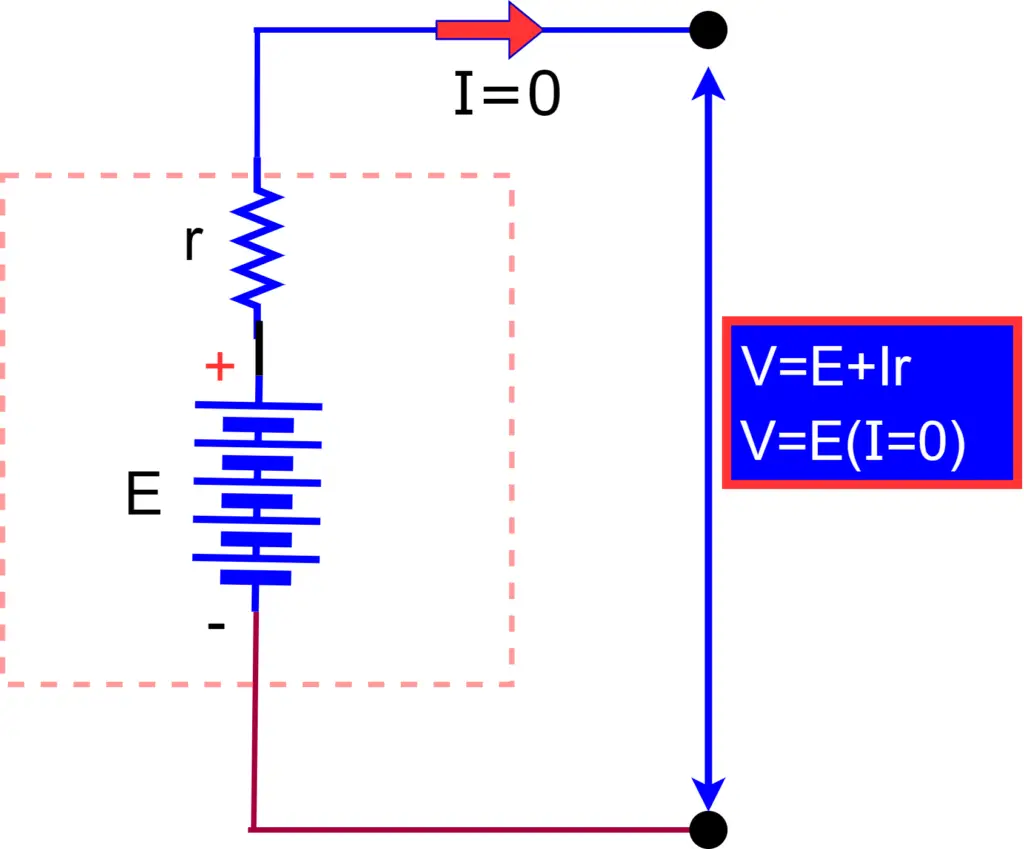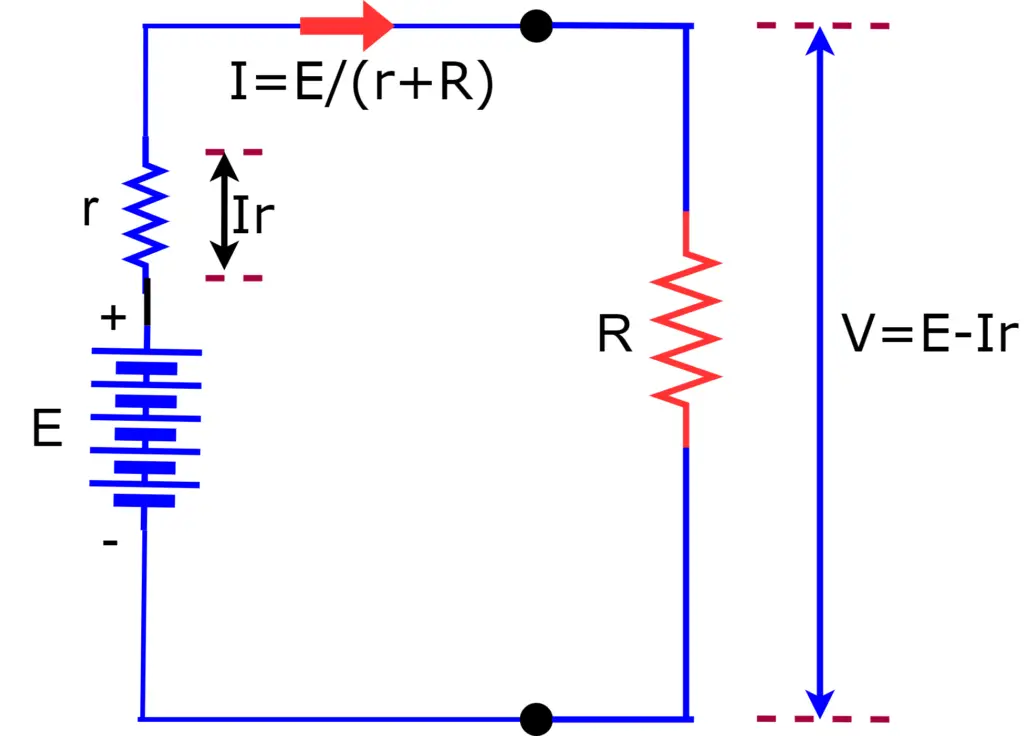The fundamental difference between EMF and voltage is related to the voltage magnitude present at the terminals of a source when there is no current flow, as opposed to the voltage magnitude at the source’s end when current flows through the circuit.
In other words, EMF represents the maximum potential difference between any two points in a circuit, which is generated by a source when an electrical load does not draw current. In comparison, voltage represents the potential difference between two specific points in the circuit. It is important to note that the resistance of the circuit does not influence the EMF and represents the pure voltage output by the source. On the other hand, voltage is influenced by the resistance of the circuit, and its magnitude decreases as the current flows through the circuit.
What is EMF?
Electromotive force (EMF) is a phenomenon that arises when energy is expended in the form of chemical, mechanical, or light to separate electrons from atoms, resulting in the formation of electrically charged particles. EMF can be generated by an electrochemical cell or by changing the magnetic field.
The unit of measurement for EMF is volts, which is symbolized by the letter E. It is important to note that EMF is a fundamental concept in electrical engineering and physics and plays a significant role in many applications, including power generation and transmission, electric motors, and electronic circuits.
In the context of an ideal power source, it is important to note that the voltage across the terminals of said source, when no current is being drawn from it, is equal to its EMF (electromotive force). This relationship is illustrated in the circuit below.

Formula for EMF

What is Voltage?
The concept of voltage refers to the difference in electrical charge between two points. Electrons migrate from the negatively charged pole to the positively charged pole of a closed electrical circuit. Voltage is the measure of the electric force’s work in transporting a charge from one point to another within an electric field. The unit of measurement for voltage is the volt (V), and it is expressed in the International System of Units (SI).
When you have a circuit like the one shown below, the voltage at the ends of the power source is the same as the voltage across the load when the power source supplies the current.

Formula for Voltage

The voltage can be defined as the amount of work done per unit charge. The formula is given below.

Difference Between EMF and Voltage
| EMF | Voltage | |
| 1. | Electromotive force (EMF) is the voltage between the terminals of a voltage source when it’s not supplying current to the load. | The voltage is the potential difference between two points in an electric circuit. |
| 2. | The open-circuited voltage of a power source that is not supplying power is called EMF. | In a closed circuit, the terminal voltage of a power source equals the voltage. |
| 3. | A charge is moved between poles in a source by external forces. | Electric charge moves from one end of a wire to the other. The voltage is caused because of the transfer of electric charges. |
| 4. | The formula for EMF: E=V+ Ir | The formula for voltage: V=IR |
| 5. | The electromagnetic force (EMF) is consistently greater than the voltage. E>V | Voltage is consistently less than EMF. V<E |
| 6. | To measure EMF, you can use a potentiometer. | To measure voltage, you can use a voltmeter. |
| 7. | The SI unit for electromotive force is the volt (V). | The SI unit of voltage or potential difference is volt(V). |
| 8. | The term EMF refers to a force that is not electric or Coulombic in nature. | Coulomb force or electric force defines the voltage. |
| 9. | Electric fields, magnetic fields, and gravitational fields are capable of inducing EMF. | Electric fields are the only ones that can induce voltage. |
| 10. | The dimensional formula for EMF is M1L2T-3I-1 | The dimensional formula for voltage is ML2T-3I-1 |
| 11. | Electromotive force (EMF) is the force that causes voltage to exist between two points. | Voltage is the result of electromagnetic force (EMF). |
| 12. | The electromotive force (EMF) exists in an electric circuit even when the electric current is not flowing through the circuit, i.e., when the circuit is open. | Voltage is only present in a circuit when there is current flowing through it. |
| 13. | The term EMF refers specifically to the source of energy. | Voltage represents the potential difference between two points in an electric circuit. |
| 14. | The electromotive force (EMF) produced by a source remains constant regardless of the resistance present in the circuit. | The voltage across two points in a circuit changes depending on the resistance of the circuit. |
| 15. | The EMF is typically denoted by the symbols ‘E,’ ‘e,’ or ‘ε.’ | The voltage is typically denoted by the letter ‘V’ or ‘v’. |
Sample Problems
Problem 1: A battery with an internal resistance of 0.1 ohms produces a potential difference of 4.3 volts when supplying 0.5 amperes of current. Determine its EMF.
Given Data-
V=4.3V
I= 0.5 A
r=0.1 Ohms
Solution:

Problem 2: Given a battery with a terminal voltage of 3 volts and an internal resistance of 0.02 ohms, what is the current being supplied to a load with a resistance of 0.7 ohms?
Given Data-
V= 3 Volts
r=0.02 Ohms
R= 0.7 Ohms
Solution:

Conclusion:
In conclusion, it is crucial to understand the difference between EMF and voltage in electrical systems and circuits. Although both terms are often used interchangeably, they represent distinct concepts.